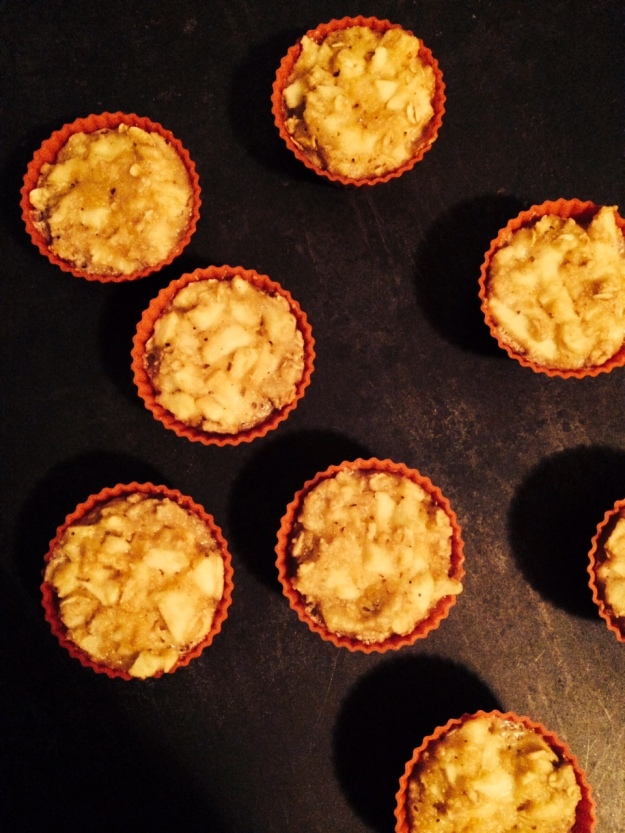If you’re in the mood to bake using traditional fall flavors like apple and cinnamon, and are looking for an alternative to a traditional wheat flour based muffin recipe, these autumn apple muffins just might delight! The texture is soft and very moist, almost cake-like, and the flavor is apple-rich due to the high fruit to dough ratio. My first experience enjoying these was on the back porch of a friend’s home, eaten with a mug of hot cider and a view of the turning autumn leaves. Her baking experiments often include trying flour alternatives like coconut flour, almond meal, quinoa, and more, and I’m always intrigued and impressed at the delicious treats she creates. This apple muffin recipe is my favorite of hers, capturing some of the beauty and flavors of fall.
Ingredients:
- 1 ½ cups almond meal
- ½ cup oats
- 2 teaspoons cinnamon
- ½ teaspoon sea salt
- ½ teaspoon baking soda
- ¼ cup honey
- 3 eggs
- 2 tablespoons olive oil
- 1 large peeled and chopped tart apple
Kitchen Tools:
- The World’s Greatest™ 3-in-1 Rotational Tri-Blade Peeler
- Mrs. Anderson’s Baking® Silicone Muffin Cups
- Mrs. Anderson’s Baking® Measuring Cups
- Mrs. Anderson’s Baking® Measuring Spoons
- Mrs. Anderson’s Baking® Muffin Tin
- HIC Stainless Steel Mixing Bowl
- HIC Silicone Spatula
Instructions:
Preheat oven to 320. Line a muffin tin with paper or silicone baking cups. Mrs. Anderson’s Baking® Silicone Muffin Cups are used and pictured in this recipe.
Peel, core, and chop 1 large apple, and set aside.
Place almond meal, oats, cinnamon, sea salt, and baking soda in a large bowl and mix until combined. Then add eggs, honey, and olive oil, and mix until combined but don’t beat. Next, fold in the chopped apples.
Fill each baking cup to the top, as they don’t rise as much as a muffin made with wheat flour.
Bake for 20 minutes. They’ll be a bit gooey at the tops until they cool. Makes about 1 Dozen Muffins.
Contributed by Nicole Herman, of HIC.







